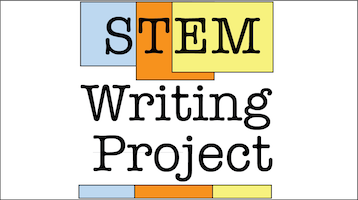STEM Writing Project
Feedback
 Reflective, Coaching-Oriented Feedback
Reflective, Coaching-Oriented Feedback
The Challenge
SEM streamlines grading so it is both less time-intensive and more impactful. In our analysis of grading practices, we found that many GTAs (and faculty instructors) teach writing in the same way they were taught: through copious comments. GTAs report spending 30-60 minutes making copy corrections and annotations on lab reports, only to have students make a few minor fixes and ignore large errors. What was particularly frustrating to GTAs was that students could not transfer what they learned to similar errors in later work.
From WAC/WID literature we learned that copious copy-editing works for a very small subset of students (such as those who go on to faculty positions) but is largely ineffective for the majority of students. Instead students learn more quickly and have better skills transfer if instructors:
- Limit the number of comments. Students only process and respond to a limited number of feedback items. When they have too many comments to process, students tend to correct simple issues first and leave larger issues uncorrected.
- Focus on the largest problems first, then work down to smaller errors later. This reinforces the previous item and helps students improve faster.
- Ask questions that encourage reflection and self-evaluation.
- Refer students to resources rather than provide direct correction. Students need to develop a habit of seeking out their own answers instead of looking to instructors for them. Doing this also reduces the amount of time instructors spend writing the same comments over and over.
- Do not copy-edit unless absolutely necessary. It is appropriate to point out where writing is vague or unclear, but not every instance. Students must learn to self-correct rather than expect someone will show them what to do every time.
Our Approach
SEM tells instructors to avoid copy-editing. Instead instructors should give "coaching-oriented comments." These provide specific information or guidance/rationale for making corrections to writing, but also foster thinking and skills transfer. Often the comments will contain open ended questions that help a student think about BOTH WHAT TO CHANGE AND WHY.
The GTA feedback codebook created for the "Analysis of GTA Comments" assessment sub-project describes the features of reflective comments in detail.
This video from the 2022 BIOME Institute Workshop explains how bins-based grading and reflective coaching feedback work together to help student writers improve.
Lessons Learned
Reflective coaching can be difficult for students to accept at first because most are are accustomed to being told what to fix to earn a perfect score. We found that introducing our feedback strategy in the first course of the majors sequence eliminated some resistance, because students had no other strategy with which to compare it. The similarities between our approach and what is used by the College's first year writing program also mitigated student resistance. Within one semester most students adapt to reflective coaching and begin to self-correct instead of relying on copy-editing comments.
Reflective feedback actually proved more difficult for STEM writing instructors to embrace because:
- They are accustomed to a copy-editing mindset, and often were trained to write that way, and/or
- GTAs in particular are uncertain of their own pedagogical knowledge, so fall back on mechanical errors because they are easier to justify.
We find that most GTAs need multiple semesters of practice before reflective coaching becomes habitual. The dataset summary and commented reports dataset from the "Grading and Marking Archived Reports" GTA training activity illustrates how GTAs progress towards reflective coaching over time.
Available Project Resources
| Resources | Links |
| Graders' Guide to Giving Reflective Feedback | DOCX file |
Looking Ahead
Check the list of To Do items for the Coaching-Oriented Feedback project to learn about currently planned activities and products that need to be created. Let us know if you want to contribute to one or more associated projects, or have other resources you would like to contribute.
Where to Learn More
Reviews & Guides to Best Practices
- Bazerman, C., Herrington, A., 2006. Circles of Interest: the Growth of Research Communities in WAC and WID/WIP, in: McLeod, S.H., Soven, M. (Eds.), Composing a Community: A History of Writing across the Curriculum, Lauer Series in Rhetoric and Composition. Parlor Press, West Lafayette, Ind, pp. 49–66.
- Breidenbach, C., 2006. Practical Guidelines for Writers and Teachers, in: Revision: History, Theory, and Practice. pp. 197–219.
- Council of Writing Program Administrators, National Council of Teachers of English, & National Writing Project. 2011. Framework for success in postsecondary writing. https://wpacouncil.org/aws/CWPA/pt/sd/news_article/242845/_PARENT/layout_details/false
- Fry, CL (ed). 2014. Achieving Systemic Change: A Sourcebook for Advancing and Funding Undergraduate STEM Education. Washington, D.C.: The Association of American Colleges and Universities. https://www.aacu.org/sites/default/files/files/publications/E-PKALSourcebook.pdf
- NSF/Dept. Education. 2013. Common Guidelines for Education Research and Development. https://www.nsf.gov/pubs/2013/nsf13126/nsf13126.pdf
- Trupiano, C., 2006. Best classroom practices., in: Horning, A.S., Becker, A. (Eds.), Revision: History, Theory, and Practice, Reference Guides to Rhetoric and Composition. Parlor Press, West Lafayette, Ind, pp. 177–197.
- Underwood, J.S., Tregidgo, A.P., 2006. Improving student writing through effective feedback: Best practices and recommendations. Journal of Teaching Writing 22, 73–97.
Research Articles
- Anson, C.M., 2000. Talking about writing: A classroom-based study of students’ reflections on their drafts., in: Smith, J.B., Yancey, K.B. (Eds.), Self-Assessment and Development in Writing: A Collaborative Inquiry, Written Language Series. Hampton Press, Cresskill, N.J, pp. 59–74.
- Gottschalk, K.K., 2003. The ecology of response to student essays. ADE Bulletin 134–135, 49–56.
- Graves, H., 2011. Rhetoric, Knowledge, and “The Brute Facts of Nature” in Science Research, in: Starke-Meyerring, D., Paré, A., Artemeva, N., Horne, M., Yousoubova, L. (Eds.), Writing in Knowledge Societies. WAC Clearinghouse; Parlor Press, pp. 179–192. https://doi.org/10.37514/PER-B.2011.2379.2.09
- Harris, M., 1979. The overgraded paper: Another case of more is less., in: Stanford, G., National Council of Teachers of English (Eds.), How to Handle the Paper Load, Classroom Practices in Teaching English: 1979-1980. National Council of Teachers of English, Urbana, Ill, pp. 91–94.
- Haswell, R.H., 2006. The Complexities of Responding to Student Writing; or, Looking for Shortcuts via the Road of Excess. Across the Disciplines 3, 23. https://wac.colostate.edu/atd/articles/haswell2006.cfm
- Kiefer, K., Neufeld, J., 2002. Making the Most of Response: Reconciling Coaching and Evaluating Roles for Teachers across the Curriculum. Academic Writing 3. https://wac.colostate.edu/aw/articles/kiefer_neufeld_2002.htm
- Perelman, L., 2009. Data driven change is easy: Assessing and maintaining it is the hard part. Across the Disciplines. https://wac.colostate.edu/docs/atd/assessment/perelman.pdf
- Reynolds, J., Smith, R., Moskovitz, C., Sayle, A., 2009. BioTAP: A Systematic Approach to Teaching Scientific Writing and Evaluating Undergraduate Theses. BioScience 59, 896–903.
- Ruegg, R., 2015. Differences in the Uptake of Peer and Teacher Feedback. RELC Journal: A Journal of Language Teaching and Research 46, 131–145.
Comments
There are no comments on this entry.
